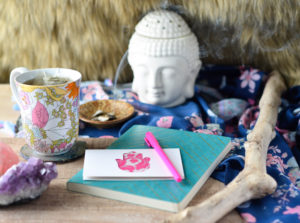
Ancestral altars in Chinese households, shrines in Hindu homes, family altars in Christian dwellings, and worship spaces in Wiccan households contain a variety of sacred objects and are dedicated to different deities and spirits. However, they all share an important purpose: allowing individuals to privately practice their faith. Examining this custom of household altars reveals some fascinating common elements and key differences within each culture.
The Earliest Household Altars
For thousands of years, people all over the world have created in-home altars used in their private and family devotional practices. Home altars were common in ancient Egypt, and archeologists have discovered small amulets modeled after existing shrines. Johns Hopkins University’s Archeological Museum displays several of these amulets, with the earliest dated to the 11th century B.C.E.
Some of the earliest versions may have also existed in Asia and other regions in the Middle East. Confucius, a Chinese philosopher who lived during the sixth century B.C.E., endorsed the idea of honoring one’s ancestors. This key teaching may have influenced the development of Chinese ancestral veneration that led to in-home altars and larger outdoor shrines. According to the Encyclopedia Britannica, home altars have also been found in ancient Greece, and they were almost universal among Christians during the first, second, and third centuries C.E.
Household Altars in Europe and Asia
The practice of constructing home shrines is in widespread use today among several cultures and religions. The household altar is a fixture in many Catholic, Lutheran, Episcopalian, and Anglican homes. BBC Religions discusses Hindu family shrines, which can vary from a small space containing statues or pictures to a large dedicated room. A “butsudan” is a typical structure in many Japanese Buddhist homes, allowing family members to venerate the Buddha, their chosen Bodhisattva, or their forebears. “Kamidana” are constructed in Shinto Japanese homes to enshrine nature spirits or deceased ancestors. House temples are also typical in Jain homes, while Sikh families set aside their own devotional spaces for prayer and veneration.
Neopagan and African Diasporic Traditions
Unsurprisingly, pagans from a wide range of spiritual paths use home altars for venerating chosen deities and ancestors as well as prayer and magick. Since Neopagan spiritual practices are highly individualistic, altars can take on a vast range of appearances. Meanwhile, followers of African diasporic religions such as Haitian Vodou, Louisiana Voodoo, Lukumi, and Candomblé also build home shrines for devotion, meditation, prayer, and ritualistic purposes. In fact, home altars can serve as a crucial cornerstone in one’s spiritual observances, especially for those isolated from like-minded faith communities due to the lack of a nearby coven, kindred, or church.
Basic Elements of a Home Altar
Although home altars in many civilizations and faiths can look quite different, they tend to share some similar characteristics. At the very minimum, space can be cleared on a dresser, shelf, or table to house several types of sacred items:
- Images or statues of one’s chosen deities, spirits, or ancestors
- Candles or incense burned during prayer, worship, or rituals
- Manmade devotional objects such as rosaries or bells
- Natural objects with symbolic significance, such as stones, flowers, or feathers
Depending on the religion, food and drink offerings can be placed at the altars. While it’s not a common practice among Christian devotees, it is a typical custom among many Neopagans, practitioners of African religions, and followers of Asian traditions such as Hinduism or Shintoism.
Faith Within the Home
Religious beliefs can manifest in private practice and communal observances. The need to bring spirituality into one’s home is instinctively human, transcending both religion and culture. The home altar is just one more example, playing an integral part in spiritual journeys for billions of people around the globe.

